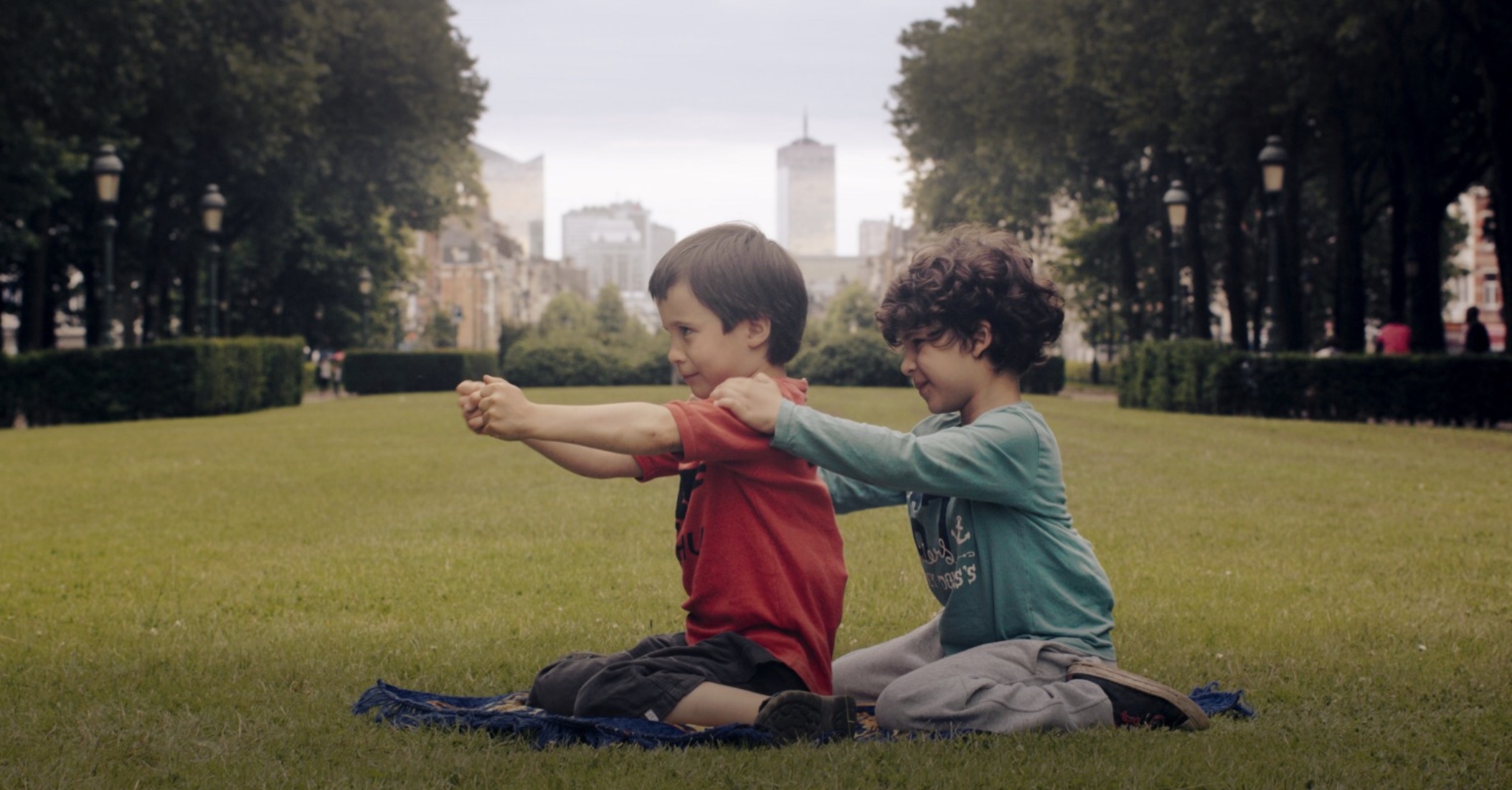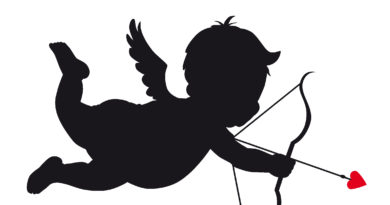Review of opening film at One World Film Festival: Gods of Molenbeek
The One World International Human Rights Documentary Film Festival kicked off in Brussels at Bozar last night with a screening of Finnish director Reetta Huhtanen’s debut feature, Gods of Molenbeek.
The film focuses on the friendship between six-year-old Chilean-Finnish boy Aatos, whose parents (we assume) are both Christian, and his relationship with the similarly-aged Amine, whose parents are both Muslims of Moroccan origin. Together, the boys roam the streets and parks of the (in)famous Molenbeek municipality they call home, doing exactly the sorts of things boys their age tend to do: climbing trees, riding bicycles, reading comic books, and generally just playing around and having a fun time together.

Interspersed with all of these typical boyhood pursuits, however, are scenes that are not normally associated with the lives of two six-year-old children. In particular, the boys appear to have a special predilection for philosophical discussion, especially on matters pertaining to religious practice and theology. Many of these discussions are (faintly) amusing, although one is often conscious of the fact that what one is laughing at is not overly dissimilar to a religiously-themed version of the (long-cancelled) American TV show Kids Say the Darndest Things:
Aatos: Do you know why you can’t eat pork?
Amine: I don’t know if I know why…
Aatos: Do you know what a Muslim is?
Amine: It’s someone who doesn’t eat pork.
Aatos: Do you know who God’s child is?
Amine: It’s… it’s Jesus, but it’s not true.
Aatos: Yes it is.
Amine: No it isn’t. Jesus exists, but he’s not God’s child.
Aatos: But he is God’s child.
Amine: No he isn’t. He’s a prophet… The Arabs know the real history.
Aatos: Why?
Amine: I don’t know.
The comedic effect of all of this is heightened by the fact that the camera is often held at or below the children’s heads’ height, making them look bigger and more powerful than they actually are. Moreover, it suggests that they are to be afforded a certain level of respect – a respect belied by the fact that their theological discussions are invariably so patently, and comically, juvenile.
This contrast, or tension, between the film’s cinematography and its content also raises a further, interesting question: Are the children supposed to be taken seriously, or not? The director, Ms Huhtanen, has stated that, for her, “the film is mostly about tolerance, and friendship which tolerates different viewpoints and worldviews”. The children, then, are evidently supposed to teach us something serious and important. But how are we supposed to reconcile this assertion with the fact that the children’s religious discussions are almost invariably intended to make us laugh, and that the respect implied by the cinematographic choice is only meant ironically?
A related issue is that it is, upon reflection, difficult to construe Aatos and Amine as having any “world-views”, at least in any reasonably well-defined way. (Not that they should be expected to, of course: they’re six.) Indeed, Aatos’ religious beliefs seem to shift radically throughout the course of the film. In the film’s first scene, he “guesses” that gods exist, “but only in Finnish folktales” – which, charitably interpreted, would suggest that he has (cautiously) adopted a philosophically rather sophisticated, ontologically fictionalist version of Finnish paganist polytheism. Later on in the film, however, he defends the mainstream Christian view that God exists and that Jesus Christ is the son of God; but at the same time he also, bizarrely, asks Amine which of his (Amine’s) gods is “the greatest” – suggesting that either he has yet to fully abandon some version of his previous polytheistic beliefs, or that he thinks that Islam is a polytheistic religion. Finally, near the end of the film, he claims to want to have a god “like Amine’s”, suggesting that, after all, he would rather be a Muslim than a pagan or a Christian (or some kind of fusion thereof).

What are we supposed to learn from all of this? That children’s “world-views” are facile, fluid, and often contradictory? That children will, sometimes poorly and occasionally rather amusingly, adopt the religious doctrines and conventions of their parents? That children – or at least some children – are interested in theological matters? Though one cannot be sure, one strongly suspects that the film intends to accomplish far, far more than this.
The most reasonable interpretation of what the film is ultimately trying to do, I think, is to establish the proposition that children with different backgrounds, and, in particular, different religious beliefs, can, in spite of it all, still be friends – even the best of friends. Arguably, however, the film unintentionally succeeds in establishing an entirely different thesis, namely, the absurdity of ascribing any set of religious beliefs to a child at all. For in what sense is Aatos really a Christian, given his undoubted pagan predilections and his apparent desire to become a Muslim?
And in what sense is Amine truly a Muslim, given that he identifies one particular Islamic practice (not eating pork) with the faith’s very essence, and then can’t even explain why such a consequence is part of Islamic practice in the first place? (Serious question: Would Amine therefore also agree that he is Jewish?) Rather than showing that children of different faiths can still be friends, then, perhaps what the film really demonstrates is that children simply lack the capacity to subscribe to different faiths in the first place: that – as Richard Dawkins has also emphasised – it is as absurd to talk of a Muslim or a Christian child as it is to talk of a socialist or a conservative one.
Given all this, an alternative and, for some, perhaps, uncomfortable (re)interpretation of the film suddenly becomes conceivable: that the children are friends precisely because they are not (truly) religious, not in spite of the fact that they are.
What cannot be denied, however, is that the film at the very least succeeds in establishing at least two other, more minor theses: first, that children whose parents are from different religious backgrounds can still be friends; and second, that Molenbeek is not, as some in the media have previously (preposterously) described it, a “hotbed of jihadism”, but on the contrary is a perfectly safe place to live in and to raise a child. These two points will, perhaps, constitute truisms to many people, especially those who have first-hand experience of the municipality. But for many others, especially those living outside of Brussels, or who live outside of places in the world where people of different religious backgrounds live peacefully side-by-side with one another, they are facts that arguably cannot be emphasised often enough.



